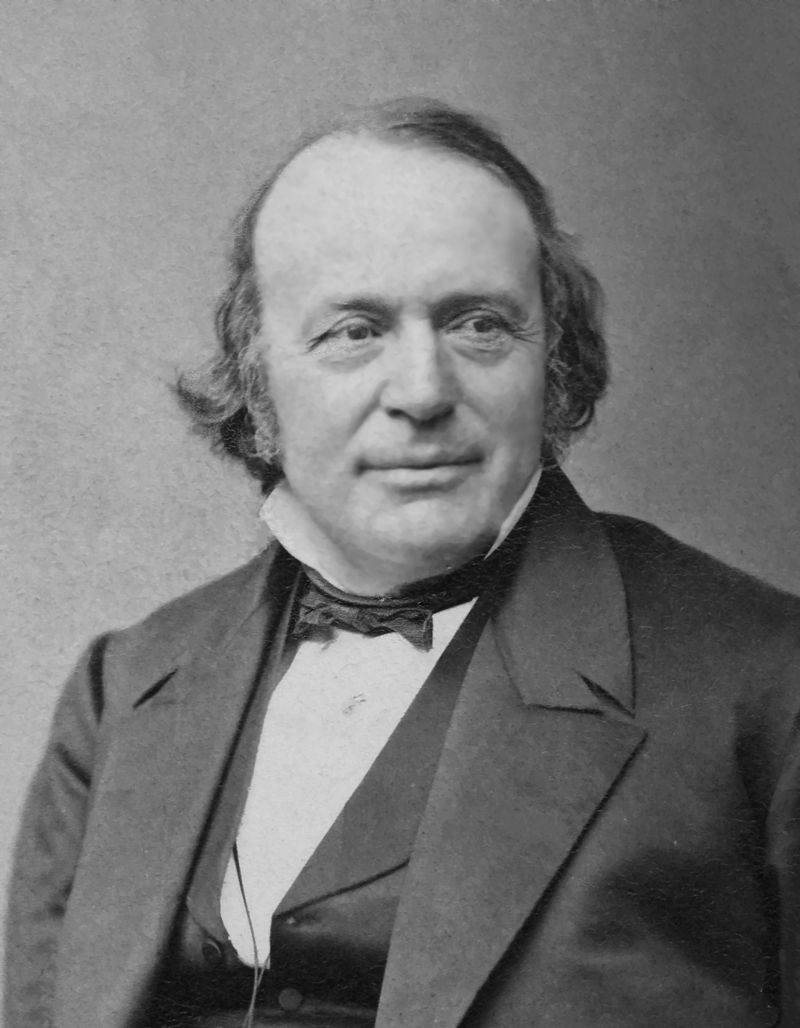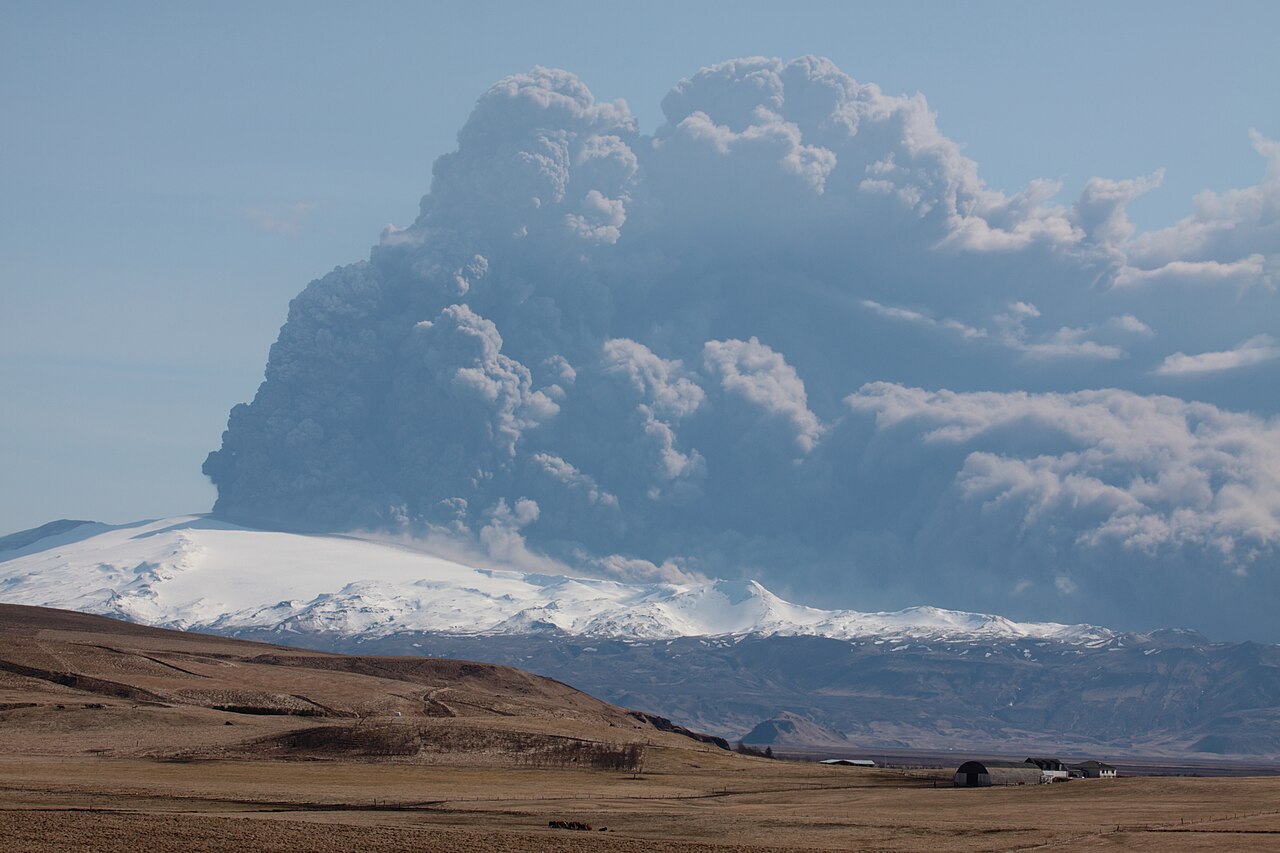Mudou-se para
Paris e ficou sobre a tutela de
Alexander von Humboldt e de
Georges Cuvier, que o lançaram nas suas carreiras da
Geologia e do
Zoologia respetivamente. Até esta altura não prestou nenhuma atenção especial ao estudo da
Ictiologia, a qual se transformou na grande ocupação de sua vida, ou pelo menos na área em que atualmente é mais recordado.
In 1832 he was appointed professor of natural history in the
University of Neuchâtel. The
fossil fish there soon attracted his attention. The fossil-rich stones furnished by the
slates of
Glarus and the
limestones of Monte
Bolca
were known at the time, but very little had been accomplished in the
way of scientific study of them. Agassiz, as early as 1829, planned the
publication of the work which, more than any other, laid the foundation
of his worldwide fame. Five volumes of his
Recherches sur les poissons fossiles ("Research on Fossil Fish") appeared at intervals from 1833 to 1843. They were magnificently illustrated, chiefly by
Joseph Dinkel.
In gathering materials for this work Agassiz visited the principal
museums in Europe, and meeting Cuvier in Paris, he received much
encouragement and assistance from him. They had known him for seven
years at the time.
Agassiz found that his palaeontological labours made necessary a new
basis of ichthyological classification. The fossils rarely exhibited any
traces of the soft tissues of fish. They consisted chiefly of the
teeth, scales and fins, even the bones being perfectly preserved in
comparatively few instances. He therefore adopted a classification which
divided fish into four groups: Ganoids, Placoids, Cycloids and
Ctenoids, based on the nature of the scales and other dermal appendages.
While Agassiz did much to place the subject on a scientific basis, this
classification has been superseded by later work.
As Agassiz's descriptive work proceeded, it became obvious that it
would over-tax his resources unless financial assistance could be found.
The
British Association came to his aid, and the
Earl of Ellesmere — then
Lord Francis Egerton
— gave him yet more efficient help. The 1,290 original drawings made
for the work were purchased by the Earl, and presented by him to the
Geological Society of London. In 1836 the
Wollaston Medal
was awarded to Agassiz by the council of that society for his work on
fossil ichthyology; and in 1838 he was elected a foreign member of the
Royal Society. Meanwhile
invertebrate animals engaged his attention. In 1837 he issued the "Prodrome" of a monograph on the recent and fossil
Echinodermata,
the first part of which appeared in 1838; in 1839–40 he published two
quarto volumes on the fossil Echinoderms of Switzerland; and in 1840–45
he issued his
Etudes critiques sur les mollusques fossiles ("Critical Studies on Fossil
Mollusks").
Before his first visit to
England in 1834, the labours of
Hugh Miller and other geologists brought to light the remarkable fish of the
Old Red Sandstone of the northeast of
Scotland. The strange forms of the
Pterichthys, the
Coccosteus and other
genera
were then made known to geologists for the first time. They were of
intense interest to Agassiz, and formed the subject of a special
monograph by him published in 1844–45:
Monographie des poissons
fossiles du Vieux Gres Rouge, ou Systeme Devonien (Old Red Sandstone)
des Iles Britanniques et de Russie ("Monograph on Fossil Fish of the
Old Red Sandstone, or Devonian System of the British Isles and of
Russia"). In the early stages of his career in Neuchatel, Agassiz also
made a name for himself as a man who could run a scientific department
well. Under his care, the University of Neuchâtel soon became a leading
institution for scientific inquiry.
In 1837 Agassiz was the first to scientifically propose that the Earth had been subject to a past
ice age.
In the same year, he was elected a foreign member of the
Royal Swedish Academy of Sciences. Prior to this proposal,
Goethe,
de Saussure,
Venetz,
Jean de Charpentier,
Karl Friedrich Schimper and others had made the
glaciers of the
Alps the subjects of special study, and Goethe,
Charpentier as well as Schimper
had even arrived at the conclusion that the erratic blocks of alpine rocks scattered over the slopes and summits of the
Jura Mountains
had been moved there by glaciers. The question having attracted the
attention of Agassiz, he not only discussed it with Charpentier and
Schimper and made successive journeys to the alpine regions in company
with them, but he had a hut constructed upon one of the
Aar Glaciers, which for a time he made his home, in order to investigate the structure and movements of the ice.
These labours resulted, in 1840, in the publication of his work in two volumes entitled
Etudes sur les glaciers ("Study on Glaciers").
In it he discussed the movements of the glaciers, their
moraines, their influence in grooving and rounding the rocks over which they travelled, and in producing the striations and
roches moutonnees
seen in Alpine-style landscapes. He not only accepted Charpentier's and
Schimper's idea that some of the alpine glaciers had extended across
the wide plains and valleys drained by the
Aar and the
Rhône, but he went still farther. He concluded that, in the relatively recent past,
Switzerland had been another
Greenland;
that instead of a few glaciers stretching across the areas referred to,
one vast sheet of ice, originating in the higher Alps, had extended
over the entire valley of northwestern Switzerland until it reached the
southern slopes of the Jura, which, though they checked and deflected
its further extension, did not prevent the ice from reaching in many
places the summit of the range. The publication of this work gave a
fresh impetus to the study of glacial phenomena in all parts of the
world.
Thus familiarized with the phenomena associated with the movements of
recent glaciers, Agassiz was prepared for a discovery which he made in
1840, in conjunction with
William Buckland. The two visited the mountains of
Scotland
together, and found in different locations clear evidence of ancient
glacial action. The discovery was announced to the Geological Society of
London in successive communications. The mountainous districts of
England,
Wales, and
Ireland
were also considered to constitute centres for the dispersion of
glacial debris; and Agassiz remarked "that great sheets of ice,
resembling those now existing in Greenland, once covered all the
countries in which unstratified gravel (boulder drift) is found; that
this gravel was in general produced by the trituration of the sheets of
ice upon the subjacent surface, etc."
In 1842–1846 he issued his
Nomenclator Zoologicus, a
classified list, with references, of all names employed in zoology for
genera and groups — a work of great labour and research. With the aid of
a grant of money from the King of
Prussia, Agassiz crossed the
Atlantic in the autumn of 1846 with the twin purposes of investigating the natural history and geology of
North America and delivering a course of 12 lectures on “The Plan of Creation as shown in the Animal Kingdom,”
by invitation from
J. A. Lowell, at the
Lowell Institute in
Boston,
Massachusetts. The financial and scientific advantages presented to him in the
United States induced him to settle there, where he remained to the end of his life. He was elected a Foreign Honorary Member of the
American Academy of Arts and Sciences in 1846.
His engagement for the Lowell Institute lectures precipitated the establishment of the
Lawrence Scientific School at
Harvard University in 1847 with him as its head.
Harvard appointed him professor of zoology and geology, and he founded the
Museum of Comparative Zoology
there in 1859 serving as the museum's first director until his death in
1873. During his tenure at Harvard, he was, among many other things, an
early student of the effect of the last Ice Age on North America.
He continued his lectures for the Lowell Institute. In succeeding
years, he gave series of lectures on “Ichthyology” (1847–48 season),
“Comparative Embryology” (1848–49), “Functions of Life in Lower Animals”
(1850–51), “Natural History” (1853–54), “Methods of Study in Natural
History” (1861–62), “Glaciers and the Ice Period” (1864–65), “Brazil”
(1866–67) and “Deep Sea Dredging” (1869–70).
In 1850 he married an American college teacher,
Elizabeth Cabot Cary Agassiz, who later wrote introductory books about
natural history and, after his death, a lengthy biography of her husband.
Agassiz served as a non-resident lecturer at
Cornell while also being on faculty at Harvard.
In 1852 he accepted a medical professorship of
comparative anatomy at
Charlestown, Massachusetts,
but he resigned in two years. From this time his scientific studies
dropped off, but he was a profound influence on the American branches of
his two fields, teaching decades worth of future prominent scientists,
including
Alpheus Hyatt,
David Starr Jordan,
Joel Asaph Allen,
Joseph Le Conte,
Ernest Ingersoll,
William James,
Nathaniel Shaler,
Samuel Hubbard Scudder,
Alpheus Packard, and his son
Alexander Agassiz, among others. He had a profound impact on the paleontologist
Charles Doolittle Walcott. In return his name appears attached to several species, as well as here and there throughout the American landscape, notably
Lake Agassiz, the
Pleistocene precursor to
Lake Winnipeg and the
Red River.
During this time he grew in fame even in the public consciousness,
becoming one of the best-known scientists in the world. By 1857 he was
so well-loved that his friend
Henry Wadsworth Longfellow wrote "The fiftieth birthday of Agassiz" in his honor. His own writing continued with four (of a planned ten) volumes of
Natural History of the United States which were published from 1857 to 1862. During this time he also published a catalog of papers in his field,
Bibliographia Zoologiae et Geologiae, in four volumes between 1848 and 1854.
Stricken by ill health in the 1860s, he resolved to return to the
field for relaxation and to resume his studies of Brazilian fish. In
April 1865 he led a party to Brazil. Returning home in August 1866, an
account of this expedition, entitled
A Journey in Brazil, was published in 1868. In December 1871 he made a second eight month excursion, known as the
Hassler expedition under the command of Commander Philip Carrigan Johnson (brother of
Eastman Johnson), visiting South America on its southern Atlantic and Pacific seaboards. The ship explored the
Magellan Strait, which drew the praise of
Charles Darwin.
Elizabeth Aggasiz wrote, at the Strait: '…the Hassler pursued her
course, past a seemingly endless panorama of mountains and forests
rising into the pale regions of snow and ice, where lay glaciers in
which every rift and crevasse, as well as the many cascades flowing down
to join the waters beneath, could be counted as she steamed by them....
These were weeks of exquisite delight to Agassiz. The vessel often
skirted the shore so closely that its geology could be studied from the
deck.'
![]()
![]()
![]()
![]()
![]()
![]()
![]()






